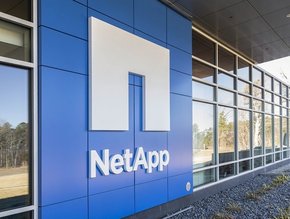Why a decentralised approach to AI is a smoking gun

Last year, Meta published a blog explaining that it would be taking a new approach to how AI was organised in the company—moving from a central AI team to decentralised AI teams that sit within product groups to better drive integration with those teams while also focusing on cutting-edge research. “Now AI centres are woven into the groups themselves, and teams are working even more closely and directly,” said Irina Kofman, Meta’s cross-functional XAI lead.
It’s an interesting move from a big player in the tech world, and it is also part of a bigger trend noticed by technology futurists such as Bernard Marr. AI specialism and access to the benefits of AI are becoming democratised. AI is shifting from a central specialist space toward the edge of business, thanks to tools available on the market like Google’s Vertex AI and low/no-code platforms.
Addressing AI labour shortage and AI solutions
One observable challenge for businesses to really excel with AI today is striking the balance between the current tools available and the skills needed to create AI applications. There are vendors specialising in certain functions who provide tools for specific subsets of AI engineers and researchers working in defined areas.
On the other hand, the highly-skilled AI engineers and researchers needed to create and generate the applications are too few to keep up with market demand. Examples of specialist tools for AI research include Weights & Biases for sharing experiments across teams and Run:AI for orchestrating graphics processing unit usage for each of the researchers. If we are seeing AI democratisation at one end, at the other end we are seeing new much-needed tools helping AI specialists do more and do faster.
A major driving force in the development of these tools is the current labour market. There aren’t enough engineers to fill current vacancies. If you subset this to experienced AI engineers and researchers, the problem is even more prevalent and might be compounded by the current round of redundancies at technology companies resulting in the loss of scarce AI talent.
This challenge is discussed in research compiled by the UK Government in 2021, at which time 35% of UK business leaders believed there would be an AI skills gap in the next two years. Furthermore, 67% expected that demand for AI skills in their organisation was likely to increase over the next 12 months.
Therefore, there is a race to become ‘the’ dominant player who democratises the ability to develop and deploy AI applications to millions of edge devices (artificial intelligence of things). There is also an emphasis on creating an environment where AI data processing can happen anywhere—cloud, on-premise, edge or hybrid. For example, NVIDIA’s recently released Launchpad and Microsoft’s Azure IoT Hub.
There is also a race to become lead suppliers of full end-to-end low/no code and specialist AI platforms that serve the needs of in-house AI specialists and non-specialists alike. Each need tools and environments to match their level of expertise and the business area they operate in. Generic AI models will not deliver results—just like staff and teams, they need to be specialised to the industry and vertical.
Doing so will allow businesses to focus on their value-add even more, and free up the time of specialist end users for AI research, for example, and front-line workers to take on higher value tasks. The best AI augments human knowledge, enabling users to focus their time and energy and the most impactful work and decisions.
New, readymade AI tools – for the expert and the non-specialist
We can see there is an overarching trend toward simple drag-and-drop low/no-code AI platforms. However, this should not be interpreted as meaning everyone can become an AI expert overnight. The trend, in different ways, can be seen to benefit experienced AI specialists as well as the non-specialist, and there are platforms that can serve both levels.
For experts, there are platforms that come with an appropriate readymade space and tried and tested models, appropriate to their level of expertise while also leaving space for them to build, test and adjust as needed in an environment that a non-specialist could not navigate.
For non-AI engineers, graphical drag-and-drop software is allowing them to create solutions that they would otherwise not have been able to do without spending a lot of time learning to code, for example.
Examples available today include machine vision and deep learning software platforms which simplify the deployment of quality assurance and inspection applications in production, warehousing and shipping environments while also creating space for experienced programmers and data scientists to create their own work.
Another is an AI demand modelling studio which provides ready-to-go, configurable, and extendable AI models and pipelines for solving essential forecasting needs. Unlike standard data science and machine learning platforms, data science teams have access to pre-built transformers and components purpose-built for the retail and CPG industries, empowering them to deliver results into production much faster.
By making AI resources more accessible and intuitive for experienced specialists and the non-expert, businesses will be able to dramatically optimise analysis and decision-making processes across operations and achieve a high return on investment with their AI and other technology and labour investments.
Start-ups and big players
In the next 3-5 years, AI application development and deployment could become a commodity, as building infrastructure blocks like serverless functions and container deployment have matured into the mainstream. I would also add that businesses collecting the unique datasets needed to train AI models and who are solving new use cases with their domain experience will be at a significant advantage as they will not need to build from scratch or have as many hard-to-find AI engineers and researchers.
And a word of caution—this could be a double-edged sword. As the costs and skill levels for AI could reduce, so too could the cost of entry. One possibility could see start-ups come in and disrupt markets with solutions on the premise they will be able to move much faster. However, bigger, more established companies have more people and more resources behind them.
In the future, it is possible these same specialised AI tools will be acquired by the bigger players to accelerate their own platforms, perhaps leading to three or four dominant players with lower cost and low/no-code and specialist readymade solutions working on the premise of high volume deployment.
Either way, chief technology officers, chief innovation officers and data science team leaders need to act now to understand how to utilise their data and business domain experience to drive their customer facing products forward otherwise they’ll risk being left behind.
To discuss these topics and learn more about how Zebra’s AI-powered solutions can help your workers sense, analyse and act in real time, reach out Stuart Hubbard.
- ServiceNow & Microsoft Partnership Driving Enterprise Gen AIDigital Transformation
- NetApp Cloud Complexity: Reliable Data is Key to AI SuccessCloud & Cybersecurity
- AMD: Expansion, Growth and Doubling Down on AI InnovationAI & Machine Learning
- Globant to Drive Formula 1’s Digital TransformationDigital Transformation






